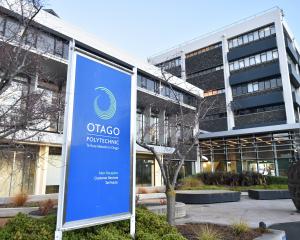Seven years ago, the University of Otago published some statistics that indicated this dominant economic force would soon be making a $1 billion a year contribution in its broadest sense to the Dunedin economy.
There cannot be doubt today that the city's cultural, sporting, shopping and culinary landscapes would wither were it not for the university and, to a lesser extent, the polytechnic and college of education.
But it is not one-way traffic.
Most importantly, the city bears the burden of servicing a swathe of north-end land and buildings free from general rates.
That cost, which would equate to many millions of dollars, must be spread among other ratepayers, largely in the commercial sector.
So, when the university discloses possibilities of considerable expansion during the next 25 years, it behooves all citizens to study with considerable care the undoubted advantages - and the disadvantages.
The relationship between town and gown has not been without its darker days.
There have been suggestions of a certain swagger, an arrogance based on the university's imposing strength: the "we know best" saga over the proposed ceremonial bridge entrance was vainglorious in its hauteur.
Serious consultations about and consideration of historic and aesthetic values have been sporadic, at best.
Although staff and students have created the demand, the university itself has often appeared to have little concern about the vexed and contentious issue of parking in the campus environs; there has been a cost to the city - financially and in reputation - from social disorder.
The university is Dunedin's leading corporate citizen and as such warrants the widest community support, but that status obliges the institution to treat the community's interests with respect and consideration.
All of these factors need to be considered in the detailed debate about the university's 25-year plan.
There is a great deal for Dunedin's citizens to be enthusiastic about.
"Short-termism", as it were, is why most New Zealand cities have the aesthetic appearance so pointedly described in the Pete Seeger song "Little Boxes".
Dunedin, by various means, has avoided that disaster.
It is a city of great charm and both natural and man-made beauty.
Long-term planning is a principal means of sustaining these qualities.
It is noteworthy that the city now has a 25-year "vision" for the university as well as a 50-year "vision" for large parts of the reclaimed upper harbour basin.
The "Campus Master Plan" envisages the equivalent transformation of the north end, including the link with the Forsyth Barr Stadium and the university plaza.
Probably most immediately controversial is the consultants' idea for the university to purchase the more run-down areas of student flats - the so-called "ghetto" - and to take responsibility for an accommodation upgrade.
Student accommodation so close to the campus proper is a major attraction and opportunity for the university and its students.
Ratepayers, however, might regard the concentration of young people as a recurrent trigger for social disorder, and prefer the student population be spread across the city.
It is a matter needing thorough discussion, although where the university has taken the initiative it has provided modern housing with style and the general enhancement of the north end.
A matter of similar importance is the suggestion of aesthetic improvements to the Water of Leith environs; that will have to matched in some way with the Otago Regional Council's essential and urgent flood-protection plans for the same stretch of river.
They may not be mismatched.
Of even greater potential impact is the idea of reinstating the one-way state highways as two-way streets, improvements regarded as necessary to slow traffic and release more land for development.
It is ironic that the one-way system was instituted in the early 1970s largely to enable the campus to be better isolated from the north-south traffic flows, and to provide for substantial expansion.
If the reversing of this highly disruptive measure gains support it will be counted as quite the most significant planning change in its effects on the wider population.
It is bound to be disputed, and not just in terms of need and practicality, but for its likely effects on traffic patterns, parking issues, and whether both one-way roads can and should be converted.
Furthermore, because state highways are involved, national authorities and the government of the day will have the final say.
The master plan - none of which, evidently, has yet been adopted - is imaginative and offers many possible solutions to maintain the continued growth of the university over a suitable length of time, if indeed growth is what the university intends.
Numerical growth and academic excellence do not necessarily mean the same thing.
Haste can so often be the enemy of progress; at least in this project all those likely to be affected have the time to give proper consideration as each element is given appropriate priority and discussed in detail.
But the first question we would caution the university to consider is whether compatibility can exist between growth in undergraduate student numbers and expansion of the campus, and excellence in graduate and post-graduate performance, teaching quality and research.











